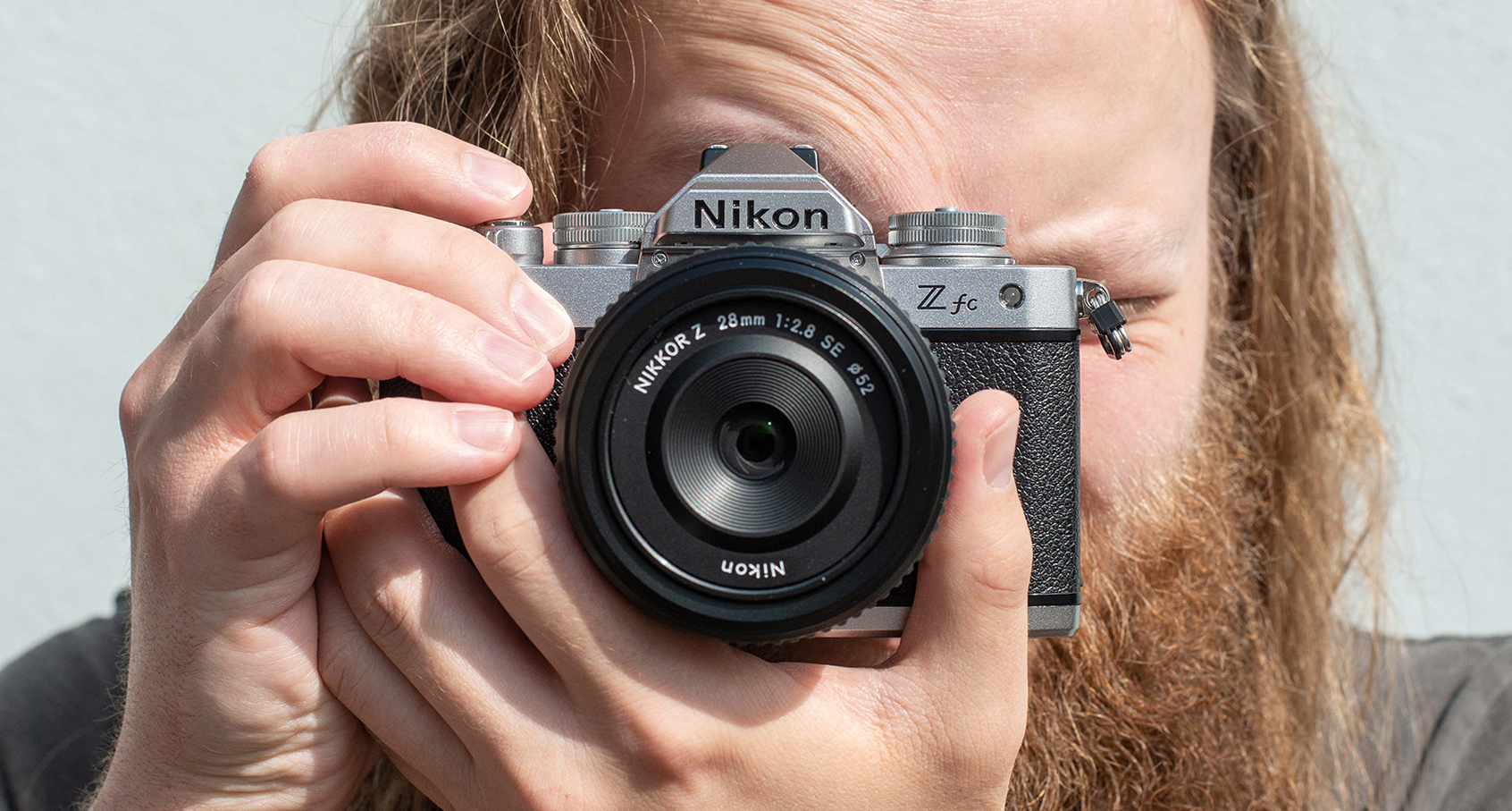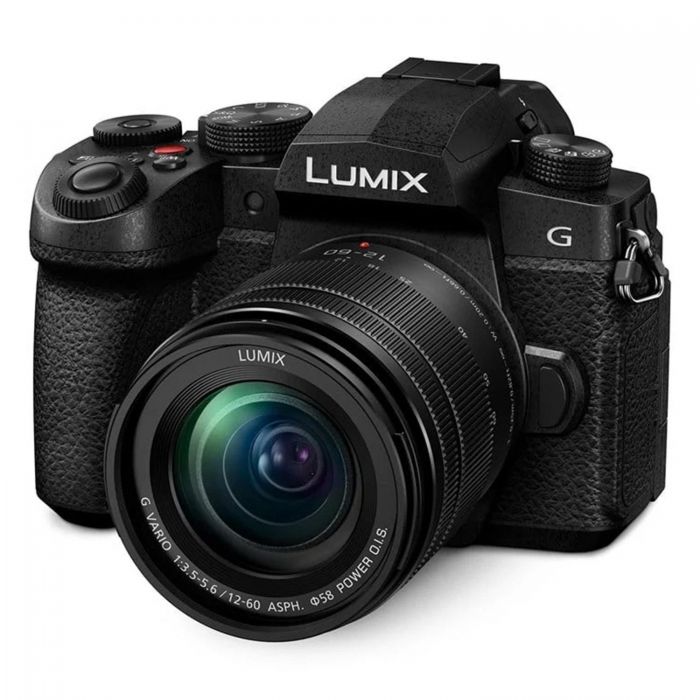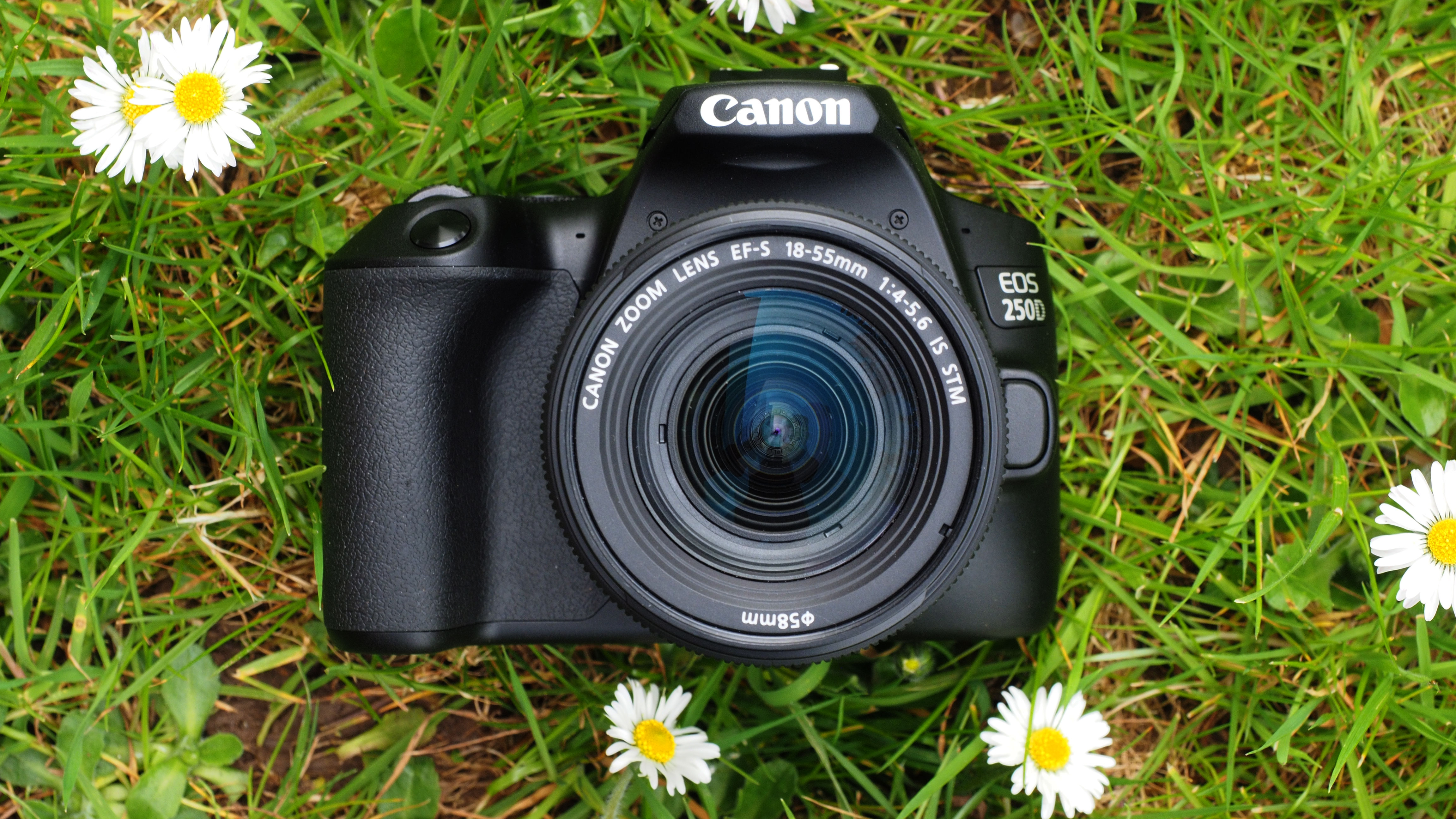The best camera under £1000: get the most features for the least cash
The best camera under £1000 will offer lots of useful features, excellent performance and super handling

The best cameras under £1000 include some absolutely top-tier options for photography and video. Whether you want a DSLR, a mirrorless camera or a fixed-lens compact, there are plenty of options out there that'll cover your bases within this budget, including a lens and everything you need to get started.
I've rounded up a selection of cameras that have impressed our reviewers, all of which can be bought with a lens and still stay under £1000 (or close to; prices do fluctuate). While you won't get the absolute best mirrorless cameras or best DSLRs on this budget, you will get an excellent camera that our expert team can vouch for.
On a lower budget? We also have guides to the best cameras under £500 and the best cameras under £200. Our guide to the best cameras for beginners is a good place to start if you're looking for bargains.

Jon is one of our go-to specialists when it comes to all aspects of photography, from cameras and action cameras to lenses and memory cards, flash diffusers and triggers, batteries and memory cards, selfie sticks and gimbals, and much more besides.
The quick list
The quick list

With pro-level features jammed into an affordable body, the Canon EOS R10 is a top pick as far as we're concerned. Fast burst and incredible autofocus make this a winner.

With its cool retro looks, the Nikon Z fc is one of the most stylish cameras going — but it's also got the imaging smarts to back it up, with 4K video and 11fps shooting.

The diminutive but powerful Fujifilm X-M5 offers some of the best value for money on the market, coming in comfortably under our budget even with a lens.

The lightweight Olympus OM-D E-M10 Mark IV is a superb mirrorless option for anyone who's new to photography or video – and it has loads of lenses to choose from.

If you're looking for a camera for YouTube, the PowerShot V1 is one of the best around right now. Its oversampled 4K looks fantastic, and it benefits from stabilization.

Capable at stills and video alike, the Sony A6400 is an excellent option for anyone who's already got a little shooting experience. Its slim build makes it easy to take anywhere.
Load the next products ↴

As you'll likely notice throughout this list, in-body image stabilization is something of a rarity on cameras at lower price points – making the Panasonic Lumix G97 stand out.

If you want to use a DSLR rather than mirrorless, the Canon EOS Rebel SL3 will fit the bill. It's easy to use, it's got loads of great lenses and it produces brilliant images.

With a powerful zoom lens that runs from 24mm to 720mm equivalent, the Lumix ZS99 is an affordable, do-everything compact that's great for travel.
Best camera under £1000
Why you can trust Digital Camera World
Best overall
Specifications
Reasons to buy
Reasons to avoid
When Canon announced the R10, it sounded too good to be true, but it really is the ultimate enthusiast camera. In terms of value for money, it's pretty unbeatable with its 24.2MP APS-C sensor, burst rates of up to 23fps when using the electronic shutter and the incredible Dual Pixel CMOS AF II that features in the high-end R3, R5 and R6 bodies. It has full subject tracking for humans, animals and vehicles which is very effective, it can shoot 4K 60p (albeit it is cropped) but considering how much it costs - it's incredible value and a versatile all-rounder.
Weighing just 429g, it's incredibly small and lightweight and paired with the new Canon RF-S 18-45mm f/4.5-6.3 IS STM you've got a powerful setup for under 550g - perfect for budding street photographers. It might not be as robust as some of the higher-end models but it delivers sharp images, has a user-friendly layout and has a very desirable price point.
Also worth considering is the similar but cheaper EOS R50, which removes a few features and physical controls for a smaller body and lower price point – check out our Canon EOS R10 vs EOS R50 head-to-head for a rundown of the key differences between these two cameras.
Best for style
Specifications
Reasons to buy
Reasons to avoid
The Nikon Z fc combines the features of the Nikon Z50 into a body that looks more like a Nikon FM2 - only in bright colors. The Z fc is much smaller than Nikon's full-frame systems such as the Z6 II and Z7 II which make it an ideal choice for travel or street photography. Whether you want it for photos, videos or both, it's capable of recording 4K 30p, can shoot up to 11fps in burst mode and has accurate and fast autofocus and Eye AF. You can also transfer images on the go via WiFi using the Nikon app or you can use it as a wireless remote.
It uses the Nikon Z mount which means you can use any of the full-frame lenses available. Nikon and other third-party brands are starting to bring out more APS-C specific lenses and you can also use the FTZ adapter if you want to shoot with F mount lenses. This camera is a little over budget (depending on where you buy it from) but it's such a good bit of kit we still think it deserves a place on the list. For just over the £1,000 you can also get the Nikon Z fc in a kit with the NIKKOR Z DX 16-50mm f/3.5-6.3 VR.
Read more: Nikon Z fc review
Best for travel

Specifications
Reasons to buy
Reasons to avoid
Fujifilm's relatively recent addition to the X-mount mirrorless family is something of a wonder. It's fair to say we were bowled over when we got the X-M5 for review – 6.2K open-gate video, powerful subject-recognition autofocus and superb image quality, all in a body that slips into a pocket and costs less than £800? Even when adding a kit lens, the X-M5 still gives you more than £100 change from a £1000 budget, and that is seriously impressive.
Its light proportions make it brilliant for travel, whether you plan to shoot photos, videos or a mixture of both. The XC 15-45mm kit lens admittedly isn't up to much – you might well benefit more from spending £799 to get the camera body-only, and using the remaining £200 to scrounge up a used XF prime lens on the second-hand market. Either way though, the X-M5 offers some of the best value for money around for a new camera, and is a brilliant buy for travel shooters who want a capable, lightweight setup.
Best for beginners
Specifications
Reasons to buy
Reasons to avoid
The Olympus OM-D E-M10 Mark IV's predecessor, the Mark III, was a great camera with plenty to offer. However, its aging 16MP sensor and contrast AF left room for improvement. Luckily the Mark IV is a great update, with the same 20.3MP sensor as the PEN-F and improved Continuous Autofocus.
While some improvements are incremental, the Mark IV brings some interesting new offerings to the table including a zippy 15fps continuous burst mode. We're also a fan of the extra-tiltable screen, which is capable of flipping 180° down to create the perfect selfie screen. And Olympus has thankfully returned silent shooting to manual mode! Make sure you get this with the EZ 14-42mm pancake lens for the ultimate pocket-size travel camera.
Read more: Olympus OM-D E-M10 Mark IV review
Best for vlogging

Specifications
Reasons to buy
Reasons to avoid
A few manufacturers have come out with cameras that are geared specifically towards vloggers, like Sony's ZV range, the Nikon Z30 and the Panasonic Lumix G100D to name a few. For my money though, the one to beat is Canon's incredible PowerShot V1, an all-in-one compact that delivers sublime video quality in a complete package that comes in under a grand.
It boasts many of the features we're used to seeing in vlogging cameras – the built-in three-capsule mic, the clip-on windshield. However, what's interesting and new is the 1.4-inch sensor, which is a cut above the 1-inch sensor that's common in compact cameras of this type, and provides a significant uptick in quality. Shooting oversampled 4K and benefiting from built-in stabilization, the PowerShot V1 can quickly and easily produce video footage that's just a cut above the competition in all respects. It also offers more advanced options like Log shooting, for those who are a bit more confident.
It's not really a stills camera, but it can put in a decent showing for photography, making it also a solid choice for hybrid shooters. I think this is the best complete package that you can get for video shooting at this price, and if you're interested in shooting for YouTube, you should snap the PowerShot V1 up.
Read more: Canon PowerShot V1 review
Best mid-range
Specifications
Reasons to buy
Reasons to avoid
Small but with a comfortable and natural feel, thanks to generously proportioned grip areas, the Sony A6400 is a mid-range model fitting somewhere between the bargain A6000 and the new flagship A6600. The A6400 just squeezes in under budget with a zoom, and is a particular great choice for those who want to shoot video as well as stills, as this mirrorless model was built with vloggers in mind.
The 16-50mm PZ (Power Zoom) kit lens is a good match for the body, although some of Sony’s other E-mount lenses can seem comparatively large on such a slimline camera. The 16-50mm lens also features optical image stabilization. That’s good news, because unlike the top-end Sony A6600, the A6400 has no sensor-shift stabilizer.
Best for stabilization
Specifications
Reasons to buy
Reasons to avoid
The Panasonic Lumix G97 benefits from a chunky handgrip and large viewfinder that make it feel like a serious camera. It's new for 2025 and is a very similar offering to the previous Lumix G90/G95, which arrived in 2019. In fact, a cynic might say that it's basically a hastily retooled version of that camera made to comply with EU standardization rules around USB-C – but it's an excellent camera nonetheless, and can be picked up comfortably within budget even with a lens.
It has 5-axis sensor-shift stabilization, which doesn't always make an appearance in cameras at this price point. It can be used alongside OIS (optical image stabilization) found on lenses for ultra-smooth video. You can shoot up to 9fps in continuous burst mode or up to 30fps when using the 4K photo mode. Our reviewer came away impressed – the Lumix G97 isn't a spectacular camera, but it's a very capable hybrid shooter offering solid value for money.
The viewfinder is super sharp, it has a fully articulated screen – which also makes it great for vlogging – and an easy-to-navigate menu system. New features compared to the previous version include Bluetooth 5.0, which allows for speedy connection with smart devices for image transfer and remote control.
See our full Panasonic Lumix G97 review
Best DSLR
Specifications
Reasons to buy
Reasons to avoid
The pint-sized Canon Rebel SL3 has been around for a while now but it's still one of our favorites. Its 24.1MP APS-C sensor delivers excellent image quality, and Live View shooting with the LCD screen so easy and intuitive, with such good Dual Pixel CMOS autofocus, that we’d actually say this is one of the only DSLRs where composing shots with the screen is as easy as with a mirrorless camera.
Canon also packs in 4K video, and wraps everything up in an ergonomically designed DSLR body that's just about the smallest on the market. The newer EOS Rebel T8i is a lot more expensive, but only marginally more desirable. With an EF-S 18-55mm kit lens the Rebel SL3 is well below our £1,000 budget limit, and it's worth looking out for twin-lens kits that add a telephoto zoom – and still for less than £1,000.
Read more: Canon EOS Rebel SL3 review
Best compact
Specifications
Reasons to buy
Reasons to avoid
If you're looking for an all-in-one shooting solution, rather than mucking about with interchangeable lenses, there are plenty of high-quality compacts that come in under our £1000 budget. We've already met one – the Canon PowerShot V1. However, that is a camera that's predominantly geared towards vloggers. If you'd prefer a more photography-oriented feature-set, I'd say a better choice would be the Panasonic Lumix ZS99.
With a very long zoom lens, covering an equivalent range of wide 24mm to telephoto 720mm, it's an ideal travel compact for covering all your bases – when the lens is retracted, the camera is small enough to slip into your pocket. The sensor is fairly small, a 1/2.3-inch type, and as we found in our review, that does mean there's a bit of compromise when it comes to dynamic range. The camera doesn't do brilliantly with high-contrast scenes or in low light, but for well-lit day-to-day photography, it's a reliable performer.
You can also charge the camera via its USB-C port, which is useful when you're out and about. Video is 4K at up to 30p, and looks decent without being exceptional. All in all, this is a solid all-rounder that's bolstered into an impressive travel camera by its monster zoom range.
Read more: Panasonic Lumix ZS99 review
How to choose the best camera under £1,000
You don't need to spend loads though to get a camera that offers a high level of performance. Even the cheaper cameras on our list are capable of producing amazing images.
The best thing to do when buying a camera with a fixed budget is figure out which features are most important and prioritise them. If, for instance, you want to do wildlife photography, it will be a good idea to look for cameras with fast burst rates and reliable autofocus systems. If you want to shoot video as well as stills, look for a camera that has 4K capabilities.
Also, bear in mind that if you invest in a full camera system, you'll need to budget for a lens as well as the camera body itself. All the cameras we've featured in the above list can be bought with a lens without breaking (or in some cases only just breaking) our one grand budget. Many cameras can be bought bundled with lenses, and this is a good way to save.
You may want to sidestep this issue by opting for a fixed-lens compact camera – however, these are less numerous than they once were, and many of the popular remaining compacts like the Fujifilm X100VI cost a good deal more than £1,000. We have included a compact suggestion in our guide, however.
How we test cameras
We test mirrorless and DSLR cameras both in real-world shooting scenarios and in carefully controlled lab conditions. We take sample images in a range of lighting conditions and of a range of subjects so we are able to put features such as autofocus, eye tracking and image stabilization.
Using the cameras in real-world environments also gives us the opportunity to get our heads around the menu system and decide whether the button layout is intuitive. A camera might perform well but if it doesn't fit in your hand or is difficult to operate it might affect where we include it in the list.
Our lab tests measure resolution, dynamic range and signal-to-noise ratio. Resolution is measured using ISO resolution charts, dynamic range is measured using DxO Analyzer test equipment and DxO Analyzer is also used for noise analysis across the camera's ISO range. We use these real-world testing and lab results to inform our comments in buying guides.
Compare prices
The best camera deals, reviews, product advice, and unmissable photography news, direct to your inbox!
Jon spent years at IPC Media writing features, news, reviews and other photography content for publications such as Amateur Photographer and What Digital Camera in both print and digital form. With his additional experience for outlets like Photomonitor, this makes Jon one of our go-to specialists when it comes to all aspects of photography, from cameras and action cameras to lenses and memory cards, flash diffusers and triggers, batteries and memory cards, selfie sticks and gimbals, and much more besides.
An NCTJ-qualified journalist, he has also contributed to Shortlist, The Skinny, ThreeWeeks Edinburgh, The Guardian, Trusted Reviews, CreativeBLOQ, and probably quite a few others I’ve forgotten.







